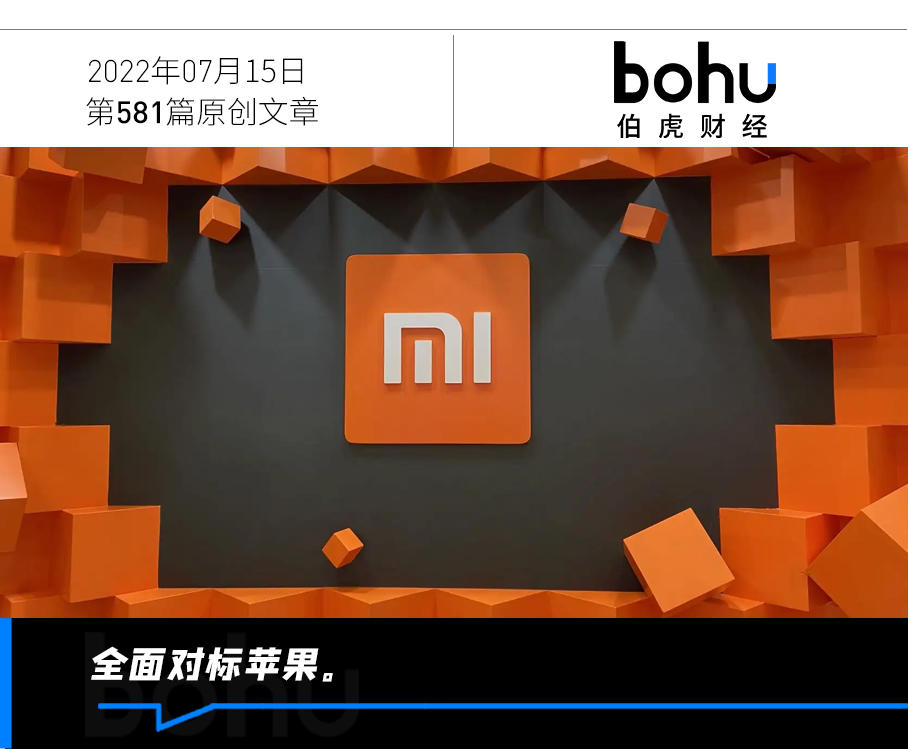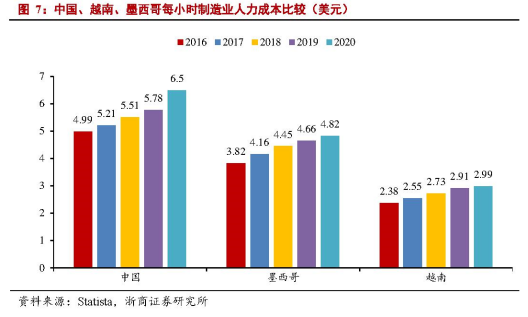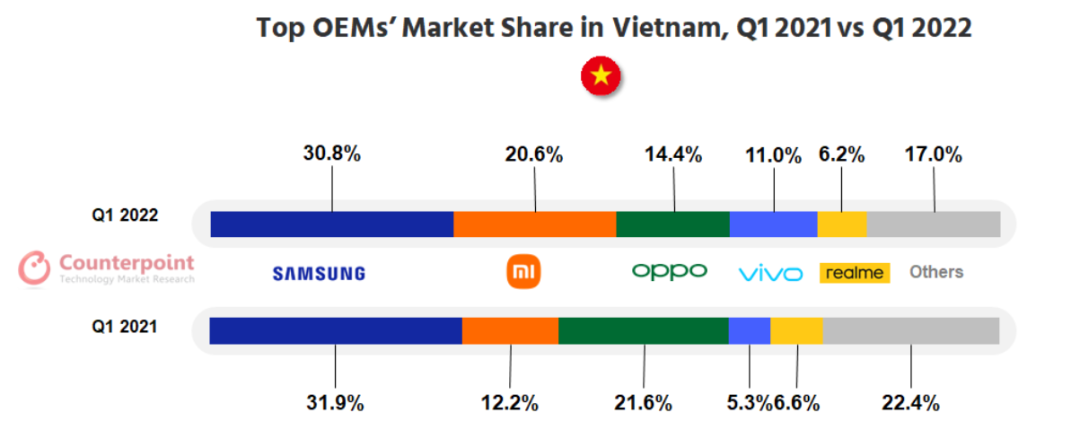Hao throwing 80 million buildings, what did Xiaomi look at Vietnam?
Author:Bobo Finance Time:2022.07.18
Source | Bohufn
Author | Li Xia
In May of this year, Vietnamese Prime Minister visited the United States and found Apple CEO Cook in the middle, asking him to incorporate more Vietnamese companies into the Apple supply chain. Cook said Apple is interested in cooperating with Vietnamese manufacturers who meet the company's standards.
Public information shows that Vietnam has now available 31 companies to produce iPhone, AirPods, iPad, MacBook and other devices for Apple.
Two months later, Rebus, who was busy making a car for a long time, did not show up in public, and took the time to release the flagship mobile phone Xiaomi 12S in person. Not only did the Snapdragon 8+ chip with TSMC 4nm technology, but also a new partner Leica.
Since the comprehensive benchmarking Apple last year, time has passed. On this day, in order to remind the employees not to forget the original intention, Rebust, at the press conference, shouted the new slogan "The iphone is not a slogan inside Xiaomi".
Immediately after the conference, the media reported that Xiaomi would go to Vietnam to build a 200,000 -flat base to produce mobile phones, with an investment of 80 million US dollars. Xiaomi quickly confirmed the news, but added it to say that Vietnam is just the company's product layout in Southeast Asia, not the entire production chain to Vietnam.
It seems that Xiaomi is not only a slogan, but also on the supply chain.
To be a benchmark, you need to do a full set
Although it is to go to Vietnam to produce mobile phones, it is not Xiaomi personally, but an foundry company called Guanghong Technology (DBG).
The official website shows that the company was founded in Huizhou, Guangdong in 1995. It mainly produced electronic components in the early days. It was listed on the Shenzhen Stock Exchange in 2017. At present, it has a production base in Jiaxing and India and a Hong Kong logistics center. Some relevant persons said that Xiaomi is mainly operated by DBG in Hong Kong.
Xiaomi said that in recent years, due to the increase in the cost of import and export logistics due to the epidemic, the company's shipments in the Southeast Asian market have increased. "Xiaomi and partners join hands to implement local production in the strategy of compressed circulation and improve supply efficiency."
And Xiaomi comes to Vietnam not only to produce smartphones, but also includes some components such as data transmission equipment and circuit substrates.
There are smart readers to ask questions, why is Vietnam?
So please open the world map. You can see that northern Vietnam not only borders Guangxi and Yunnan in China, but also is tightly surrounded by the South China Sea into a narrow "S" coastline. Such conditions are not engaged in foreign trade. The ancestor's decision.
According to the "Vietnam Economic" report, the total import and export of Vietnamese goods in the first quarter of 2022 was US $ 176.35 billion, an increase of 14.37%year -on -year. As the world's first trading country, China increased by 10.7%in the same period.
The superior geographical location is only one aspect, and the most important thing that can attract people in the past is people.
As of the end of 2021, Vietnam's national population reached 98.2 million, with an average age of 32.9 years. According to the research report of Zhejiang Business Securities, the labor cost of Vietnam's manufacturing industry in 2020 is $ 2.99 per hour, less than one -half of China.
In recent years, domestic growth has entered a stage of high -quality development from the past high -speed growth. Many companies have begun to overseas sea as a new growth line. Vietnam, which is young and low -cost, has naturally appeared vitality, thus becoming a domestic investment hot land.
An example is real estate. As a vane of the city's economy, in April this year, rare Li Jiacheng and its real estate company Changshi Group appeared in Ho Chi Minh City, Vietnam to talk about investment in real estate with the local mayor.
Back to the mobile phone, as a benchmark apple for Rebus, Tianfeng International Analyst Guo Mingzheng said on a social platform a few months ago that AirPods Pro 2 will start mass production in Vietnam in the second half of 2022. There are also media reports this year that Apple is discussing the transfer of iPad from China to Vietnam.
Since the last decade, "Fruit Chain" companies such as Goer Co., Ltd., Lixun Precision, Yu Tong Technology, Lan Si Technology, Lingying Intelligent Manufacturing, Meiyingsen, and Berne Optics have set up factories in Vietnam. It is said that Foxconn plans to invest $ 700 million in Vietnam to build assembly factories for old customers Apple. Since Xiaomi has to be target, it must be a full set.
In addition, as the number one opponent in Xiaomi's globalization, especially in these developing countries, Samsung, Samsung, entered Vietnam in 2009. After closing China's last mobile phone factory in 2019, the Guangdong Huizhou factory, Vietnam was used as production as production. Heavy ground, now it is nearly half of Samsung's global smartphone capacity.
In summary of the above factors, Xiaomi enters Vietnam is an inevitable choice.
Supply chain transfer in the environment
This is not the first time Xiaomi has built a factory. In February of this year, after the meeting between China and Arabia, some media reported that Xiaomi wanted to build a factory at the Firedi Island at the southern end of Argentina -it can be seen that "Lei Jun released 100 billion big moves, Xiaomi sneaked to the southern hemisphere to build a factory".
The first place where Xiaomi went abroad was India. In 2015, Xiaomi invested US $ 3.5 billion and Foxconn set up a production line in India. Now Xiaomi has 7 factories in India, contributed more than 20,000 jobs to the local area.
(Xiaomi market share in Vietnam)
Generally speaking, the factors that drive mobile phone manufacturers to build factories abroad are mainly costs, such as labor costs, logistics costs, etc., but in addition, there is an important factor is tariffs. For various countries, in order to develop their own industry, they will ask mobile phone manufacturers to transport components across their country to assemble and produce. In order to encourage foreign capital to come in, the government will also give tariffs.
For example, Bangladesh has formulated a policy of increasing the tariffs on imported mobile phones, reducing import tariffs on components, and removal of VAT purchased by consumers. The import tax rate for the entire smartphone machine is 57%. Only 18%were received, so as to encourage mobile phone manufacturers to come in to build factories and provide employment.
There are also some policy compulsory, such as Argentina that Xiaomi entered before. In order to support the manufacturing industry, the Argentine government stipulates that all mobile phone manufacturers who want to sell locally can only transport components to local reassembly in order to enter the domestic market.
In addition to cost and policy considerations, there have been new considerations in the past two years: diversified risks.
Most of Xiaomi ’s mobile phone production was concentrated in China and India, but in recent years, India seems to be not very friendly to Chinese companies. This is not recently, India's VIVO accounts frozen VIVO account on the grounds of suspected money laundering (approximately RMB 390 million).
Xiaomi is even worse. In January of this year, the Ministry of Finance of India issued a 560 million sky -high tax bill for Xiaomi. This "May 1st" India also said that Xiaomi was suspected of "illegal remittances" to seize its deposit of 55.5 billion rubles (about RMB 48 It is estimated that Xiaomi has not made so much money in India in the past 8 years, and the Ministry of Foreign Affairs also came out to speak.
This risk not only exists in the business environment, but also reflects the more and more unstable supply chain in the past two years. The most typical is the two -month blockade of Shanghai, which directly led to Apple's second largest iPhone founder and Shuo Shuo stopped its assembly operation in Shanghai. As a very sensitive Cook for the supply chain, naturally wants to disperse this risk.
As Xiaomi, it should be thought so.
Finally: Who comes first with high -end and globalization?
IDC data shows that since the shipping volume of 1.566 billion units in 2017, it has declined year by year. In 2021, the epidemic in the previous year has dropped too much, and it has risen slightly, but it is still under 1.4 billion.
(Data: IDC Drawing: a little financial)
The decline of smartphones in China is particularly obvious. In the first quarter of this year, global smartphone shipments fell 11%year -on -year (Canalys), while China fell 29.2%(China Xintong Academy).
The research institution Strategy Analytics said that the average replacement cycle of Chinese users was 28 months. In 2017, data from another research agency Counterpoint showed that the replacement cycle of the Chinese people was 22 months at that time, and it was half a year.
Whether it is the epidemic caused by the rise in raw materials, the decline in user consumption willingness, or the insufficient innovation of mobile phones, instead of inspiring people's desire to buy, or just because of playing smartphones for more than ten years, it is understood. "Why don't you want to change your phone" and "How long have you not changed your phone" and boarded the hot search.
Now it is difficult to leverage the domestic stock update, it is better to help the third world countries increase the penetration rate of smartphones.
So Xiaomi aimed at Apple in China, rolled high -end, and took his hand to the third world on the other. Here, Xiaomi can not only copy the experience in China in the first decade of establishment in China. Now even from India, Argentina to the present Vietnam, even the factory has moved over.
According to Xiaomi's own genes, maybe Xiaomi products cover the entire third world earlier before achieving high -end.
Reference source:
1. Daily Economic News: See the truth of "Vietnam Investing in Hot Land"
2. Huaxia Times: Lei Jun followed Apple to "take" the first step, Xiaomi Vietnam made mobile phones
3. Red Star News: Xiaomi began to produce mobile phones in Vietnam, and responded that it was not the entire production chain to move
4. Nikkei Chinese website: Xiaomi began to produce mobile phones in Vietnam
*The first picture and picture of the cover of the article, the copyright belongs to the copyright owner. If the copyright owner thinks that his work should not be browsed or should not be used for free, please contact us in time. This platform will immediately correct it.
- END -
Innovate the community to empower the industrial butterfly change -Shandong high -end chemical indus
Although it is the largest province of chemical engineering, Shandong petrochemical products are still mainly low -end and basic varieties of the community. The degree of refinement is not high, the i
Min and Germany: The subsidiary intends to accumulate 518 million yuan to buy a 6 -inch wafer production line equipment
On July 5th, Capital State learned that the A -share company Minteo Electronics (300656.SZ) announced that the company's wholly -owned subsidiary Min De (Lishui) intends to sign the second and third b...







